It is a hard life, reviewing ski boots.
Perhaps you’re blessed with feet matching the gnomes of Montebelluna upon who’s archtypical foot shape most modern ski boot molds are based. But I doubt it. And that’s certainly not me. Unless I size my boots like a claw-foot bathtub filled with foam packing peanuts, they usually hurt in stock form.
You can’t “test” something that makes your feet feel like they’re caught in the door of your pickup truck. And skiing with bathtubs on our feet is not exactly conducive to an honest opinion. So the first step with boot testing here at WildSnow is to pound, heat, press, grind and otherwise abuse our shoes until we can spend more than a few hours in them without creating foot problems so severe they actually become part of the family genome and pass up through the generations (perhaps that’s what happened in Montebelluna?).
Follow the fit tricks we used on La Sportiva Spectre.
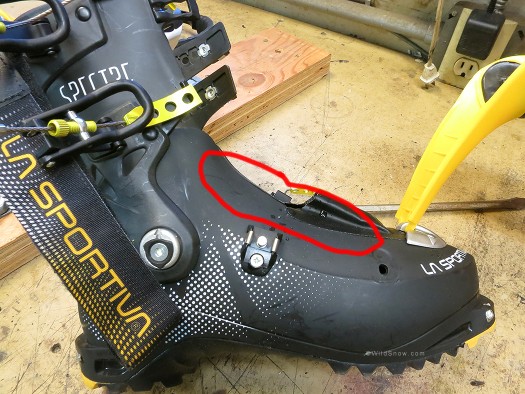
The beautifully thick, heat mold liner of the Spectre ski boot will take care of most fit issues for most people. But the shell is unusually low over the instep and has a smaller 'throat' opening than normal. I've got high and sensitive insteps so I found the shoe not only hard to enter but somewhat painful in stock form. Luckily, an instep 'lift' is one of the easier ski boot fitting shell mods. Oh, and yes I did remove the lower fourth buckle, as I do with most 4-buckle boots. More about that when we get into ski performance. (Click images to enlarge)
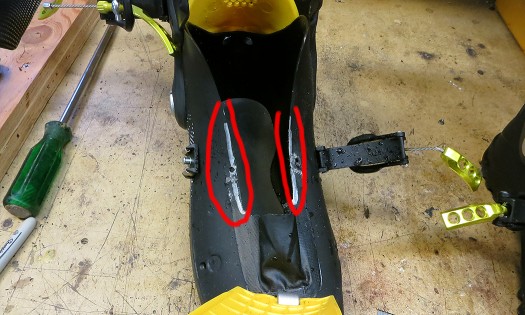
First, we cut away the water dam, then marked the material we'd grind out to widen the throat. Amount of cutting was estimated by comparing throat size to other shoes in our stable. If I was doing this project for a boot fit client, I'd have compared the shape of the Spectre shell to another shell that was known to be comfortable.
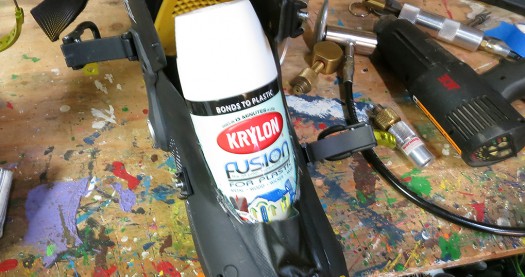
After grinding the throat larger, next step was the heat molding. In some cases this would be better done BEFORE grinding, as it may be enough. But I knew from past experience that I needed the opening to be larger as well. Using a paint can as a shaper expander results in somewhat of a lift but also simply molds the opening wider. For a real lift, stuffing lacrosse balls under the opening tends to put more upward mold force than the paint can (though it's nice how the paint can immediately cools the heated plastic). Incidentally, the Grilamid type plastic used for Spectre is incredibly easy to heat mold. What a joy over the old days of elastic Pebax. If you're clever and wear good gloves, you can actually shape heated Grilamid with your hands.
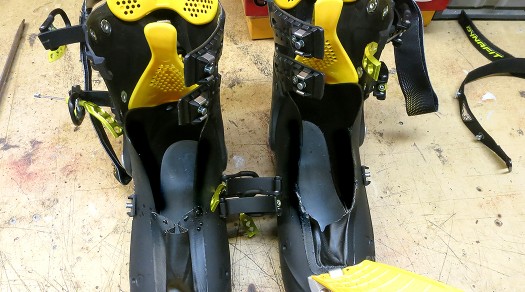
Original boot to left, modified to right showing the quite larger throat. This was all I needed to make my insteps comfortable. If that hadn't been the case, I would have done a higher lift combined with removing some material from the liner tongue where it pressed down on my instep.
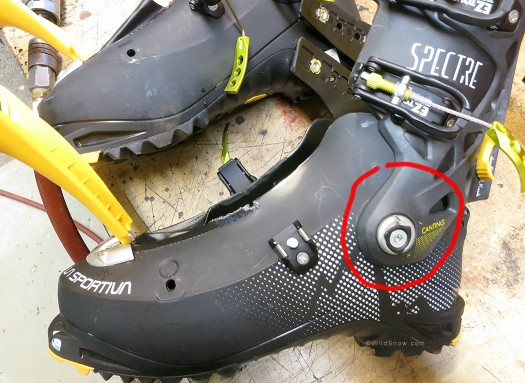
Only other shell mod I needed was to punch out the ankle 'bump' area for my left foot using our boot press. I did this with the cuff still attached, which is tricky. Again, the type of plastic La Sportiva uses is easy to heat mold--too easy sometimes, as I almost had a melt-down from over heating.
After the shell mods, I shaped a drop-in footbed from EZ-FIT and heat molded the liners. Then I went skiing. More coming.
Find the La Sportiva Spectre here.
WildSnow.com publisher emeritus and founder Lou (Louis Dawson) has a 50+ years career in climbing, backcountry skiing and ski mountaineering. He was the first person in history to ski down all 54 Colorado 14,000-foot peaks, has authored numerous books about about backcountry skiing, and has skied from the summit of Denali in Alaska, North America’s highest mountain.
